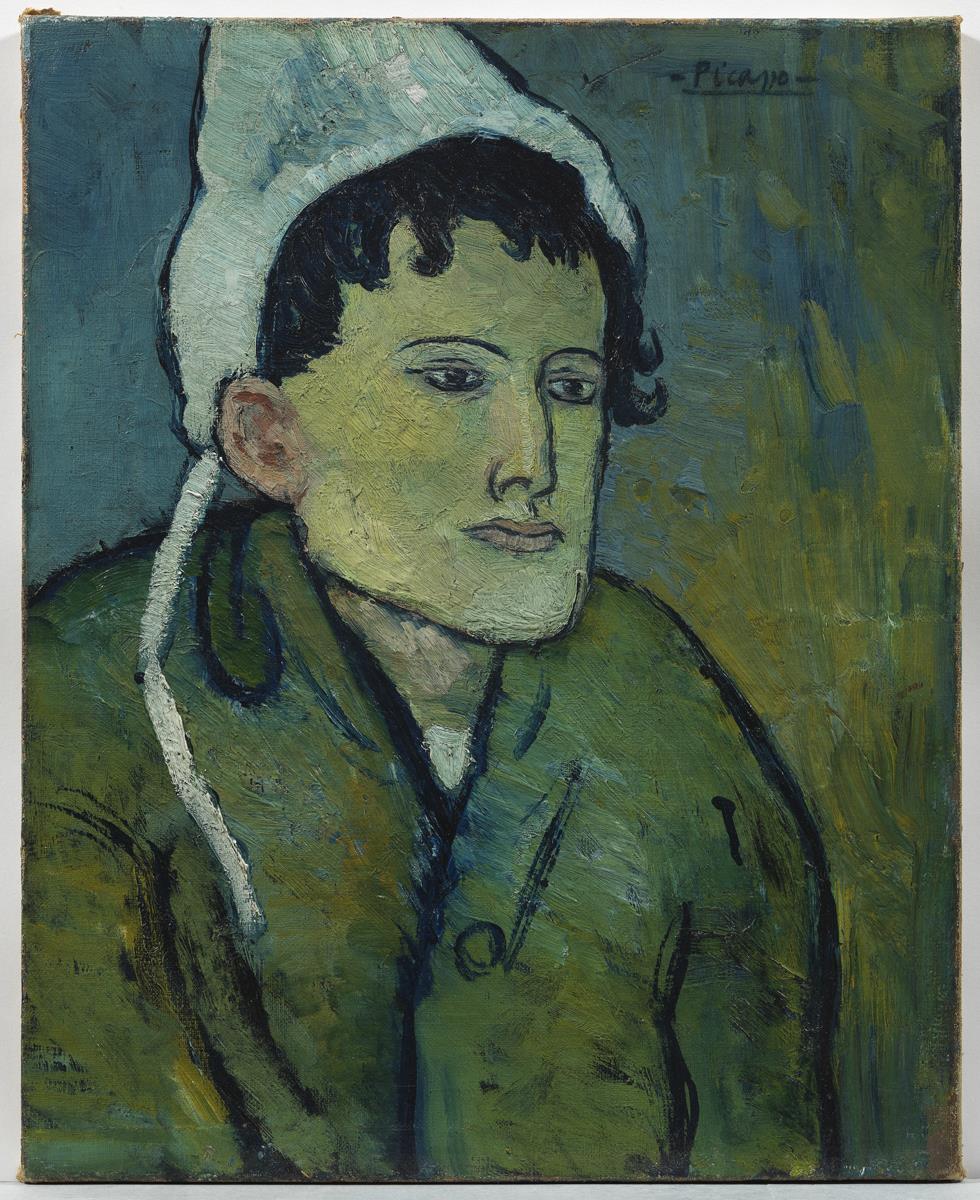Woman with a Bonnet

Woman with a Bonnet
Woman with a Bonnet
In the spring of 1901, Picasso took his second trip to Paris, this time in the company of his friend, painter Antoni Jaumandreu Bonsoms, with the main and exciting objective of carrying out an exhibition at the prestigious Ambroise Vollard gallery in Paris. The show was well received and Picasso, who set up his studio on Boulevard de Clichy in the same space where his distressed friend Carles Casagemas (who committed suicide that February) had briefly resided, decided to stay for an extended period in the French capital and did not return to Barcelona until January 1902. If the paintings presented chez Vollard partly translate, in their intensity of colour and rhythm of brushstrokes, the lifestyle guzzled up by the inhabitants of the metropolis under the spell of the Belle Époque, the canvases produced since the end of that summer, and especially during that autumn, reveal that the artist entered a new stage of marked introspection, due to the way in which they are permeated with an omnipresent blue and feature marginalised individuals, who live on the verge of social exclusion. Years later, Picasso expressed that he was contemplating the death of his friend Casagemas when he began to paint in blue.
In any case, in search of new subjects to paint, Picasso managed to gain access to the Saint-Lazare women’s prison that autumn thanks to his friend Dr. Louis Jullien. As a result of his various visits to the jail, a series of paintings featuring the inmates, many of them prostitutes who had been diagnosed with syphilis―considered at that time a sufficient offence to deprive a woman of her freedom―saw the light. To distinguish them from common prisoners, they were forced to wear a white headpiece similar to a Phrygian cap, which automatically reveals part of the identity of the model who inspired “Woman with a Bonnet”. However, silhouetted against a neutral background, without spatiotemporal references and represented in a serene pose despite the fragility of her condition, this woman radiates all the dignity that the coif intended to take away from her. Stylistically, the figure, with its outlined silhouette, connects with Paul Gauguin’s synthetism to the extent that colour and form are given the same importance—and thematically it must not be overlooked that the Breton women wearing the characteristic Breton hat that Gauguin was so interested in resonate with the figuration of this woman with a bonnet—while the texture and density of the brushstrokes bring it closer to some of Van Gogh’s portraits. It must be said that Picasso dedicated more than one painting to portraying the bust of one the inmates of Saint-Lazare. A figure almost identical to this one lies hidden beneath the blue portrait of Jaume Sabartés, also from 1901 (MPB 70491), the existence of which came to light thanks to a radiological examination. The reason is unknown, but Picasso never got rid of this painting; in 1982 his widow, Jacqueline Roque, donated it to the Museum along with a magnificent collection of forty-one ceramic pieces.
Located in
CP Sala 08 centre41 cm x 33 cm
Gift of Jacqueline Picasso, 1985
MPB 112.750








